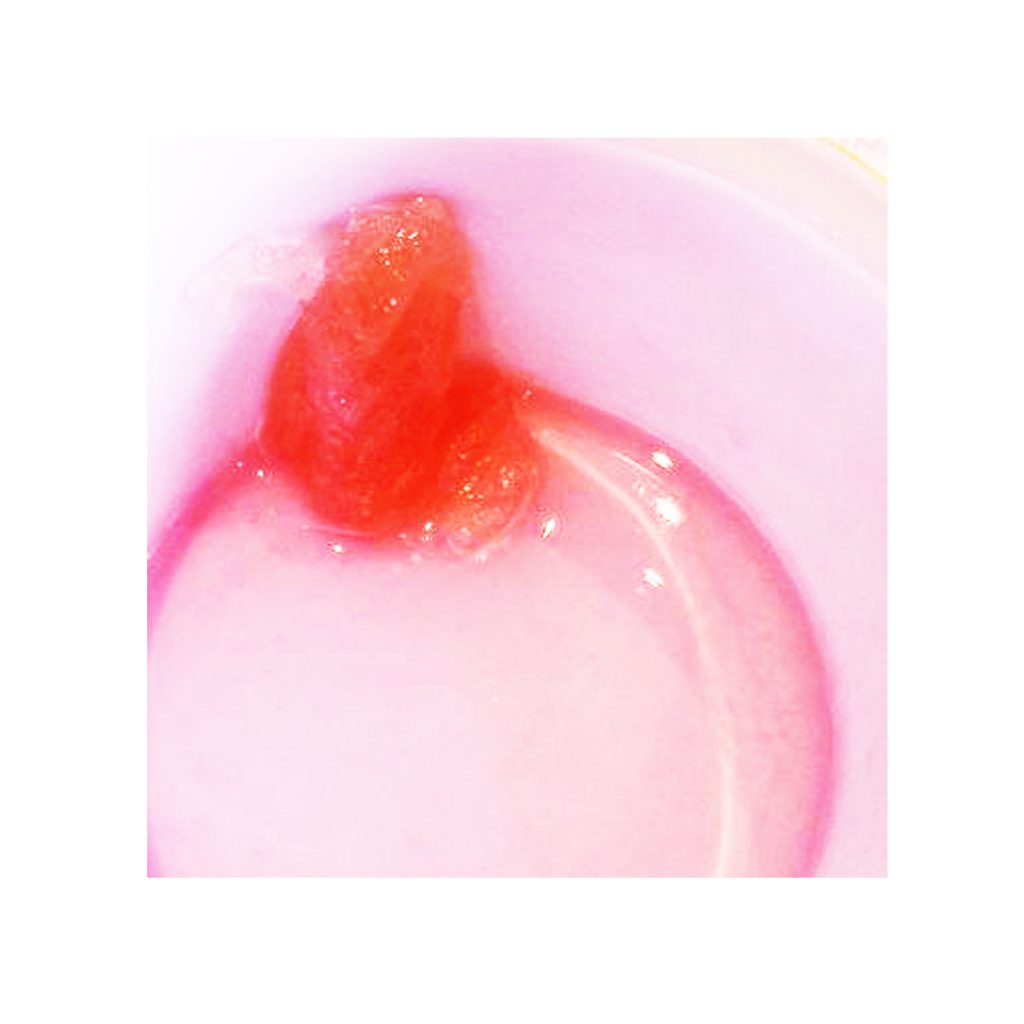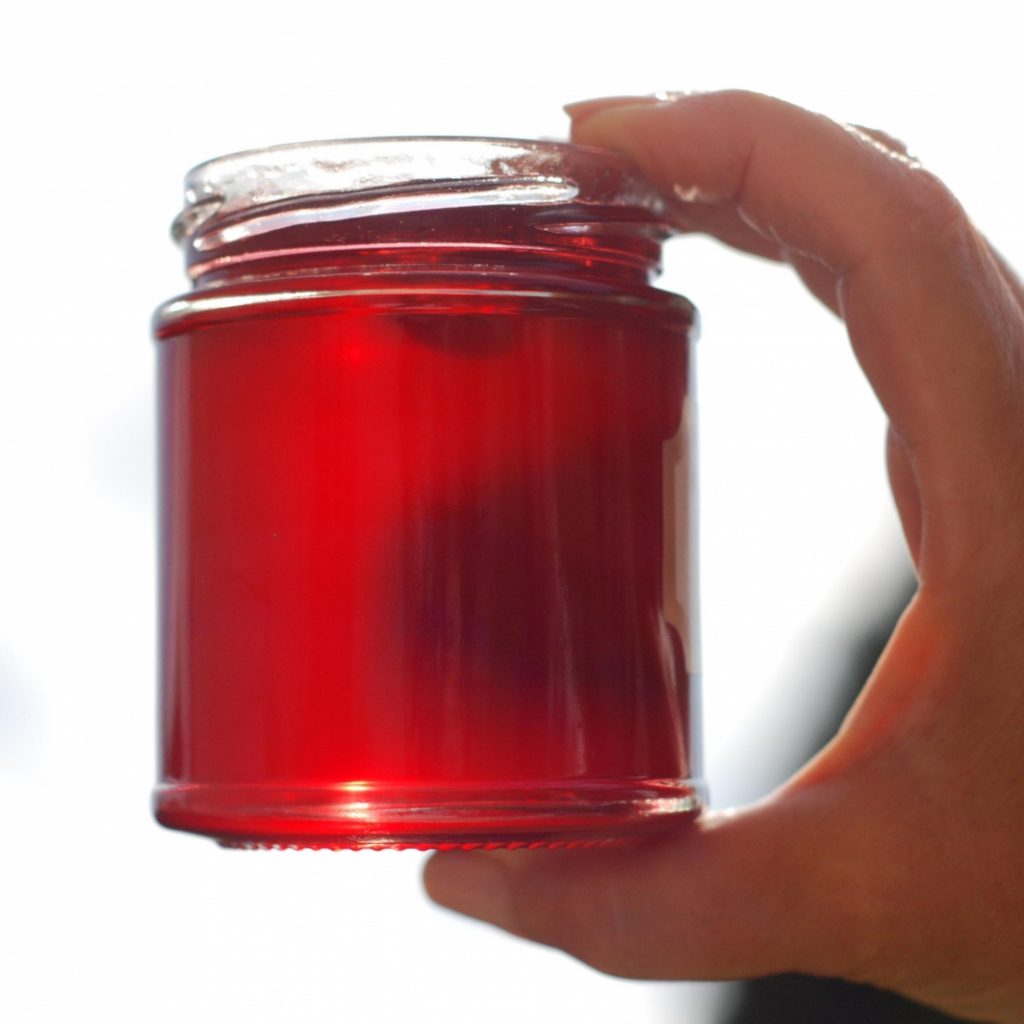March, April and May are three of the quietest months for preservers. After the excitement of Seville oranges and other citrus fruit for marmalade, I am bereft, waiting for the arrival of soft fruits. Although Rhubarb in April brings a welcome distraction, it lacks pectin and acid and I prefer to leave it for a few months and use it for chutney. As soon as the blossom appears on the Plum and Damson trees, I forage in my freezer for inspiration. Every year I have a glut of redcurrants, this year 10kg.
Redcurrants became popular during the sixteenth century; the word currant was first used in 1550. Before then, currants were called ribes and they found favour with cottage gardeners. A mature red currant bush may produce up to 5kg of fruit. Popular varieties include Red Lake, Rondom, Jonkheer van Tets and Rovada.
Time-consuming to pick, these red jewels are rich in pectin and acid, my favourite fruit for pectin stock.
Pectin stock
I make batches of pectin stock from Redcurrants to freeze and use during the summer to make Strawberry jam or any jam with fruit low in pectin.
Gently simmer 1kg of Redcurrants, barely covered with water for 15 minutes, mashing the fruit to release the juice. Strain the pulp and juice through a sieve lined with muslin, suspended over a bowl. Test for pectin ( see method in the recipe below ) Measure the juice and freeze it in batches of 100ml. To use it in Strawberry jam, add 100ml for each 450g of fruit. Simmer the fruit and stock together before adding the sugar and boiling to a set.
I also use Redcurrants in Tutti Frutti jam and liqueurs. They are best known for making a sweet or picquant jelly, a favourite, store cupboard staple, featured twice in the BBC series, Mary Berry Cooks.
Homemade Redcurrant jelly, made with an authentic recipe should be superior to any sold in supermarkets. A jelly is made in three stages, gentle simmering of the fruit in water, to soften the fruit, allowing the pulp to drip in the jelly bag and boiling the juice with sugar to a set. I always work with 900ml of juice. Recipes with larger volumes, take longer to set, are often darker in colour and lack a true fruit flavour.
Spiced Redcurrant Jelly
1.4kg redcurrants
600ml water
150ml distilled malt vinegar
3 cloves
Small stick of cinnamon
Granulated cane sugar
1. Gently simmer the redcurrants in the vinegar and water, with the spices tied in a muslin bag in a large preserving pan for 15 minutes. Mash the mixture.
Gently simmer the redcurrants in the vinegar and water, with the spices tied in a muslin bag in a large preserving pan for 15 minutes. Mash the mixture.
2. Remove the spice bag and strain the pulp and liquid through a jelly bag, suspended over a large bowl. Allow the mixture to drip for up to 4 hours or overnight. Do not squeeze the bag as this will spoil the jelly by making it cloudy.
3. Check the pectin content. Remove 5ml of juice from the bowl. Pour the juice into a small dish. Add 15ml of methylated spirit to the dish and swirl the contents together. A large, jelly lump will form if plenty of pectin is present. If the lump looks like an amoeba, simmer the juice and re-check the pectin at 5 minute intervals.
4. Measure the juice and for each 600ml of liquid, warm 450g of granulated cane sugar.
5. 
Heat the juice and dissolve the sugar. Boil to setting point and test for a set after 4 minutes, using the flake test. Take a spoonful of the jelly out of the pan, hold the spoon over the pan and turn it sideways. As the jelly slides down, it should suspend on the side of the spoon.
6. Remove any scum from the surface with a metal spoon. Pour the jelly into clean, warm 225g jars and seal with new, vinegar resistant twist top lids. Leave the jars upright and undisturbed to set.
For more Preserves Recipes First Preserves: Marmalades, Jams, Chutneys or First Preserves: eBooks
